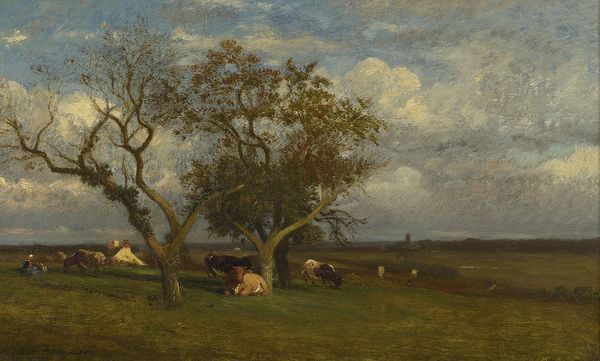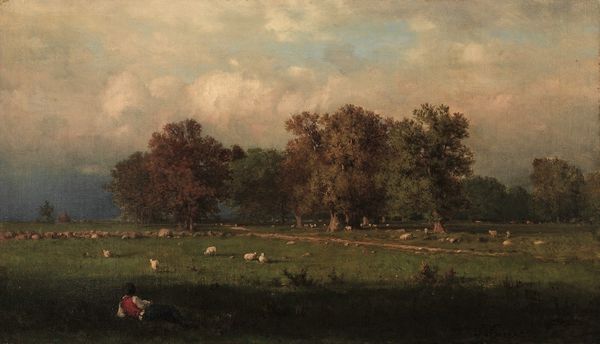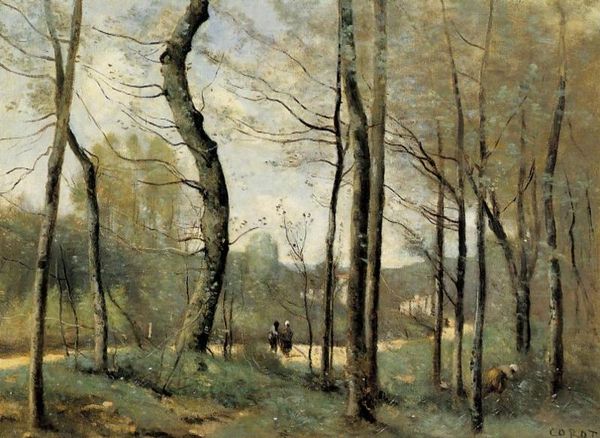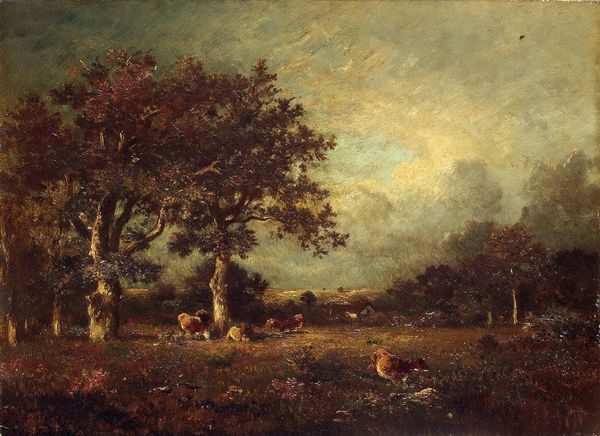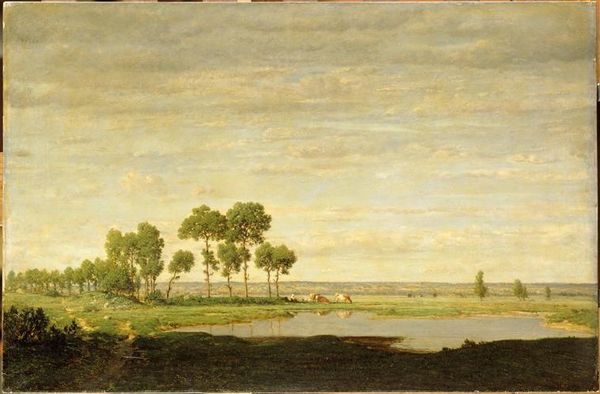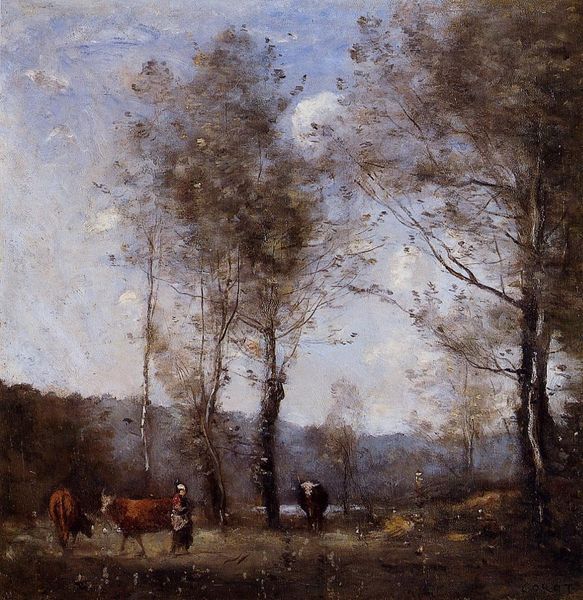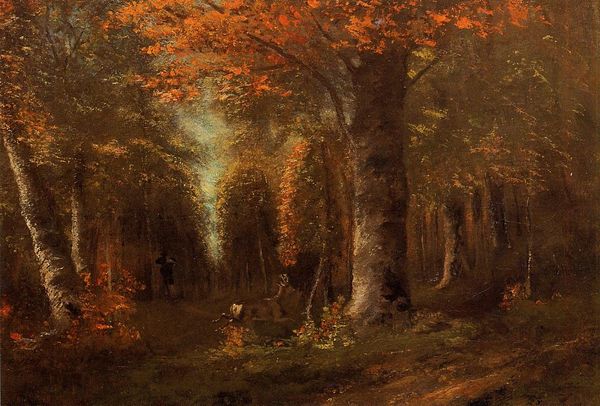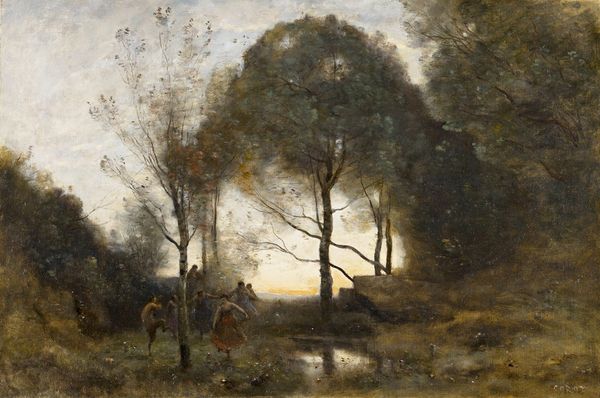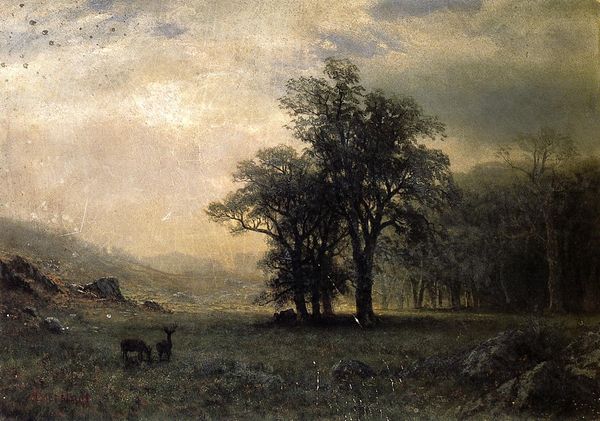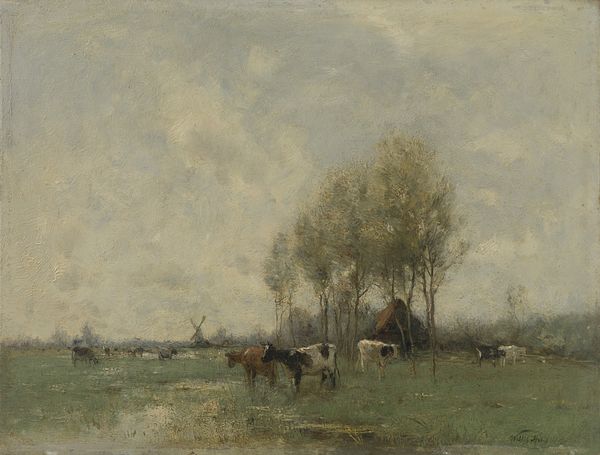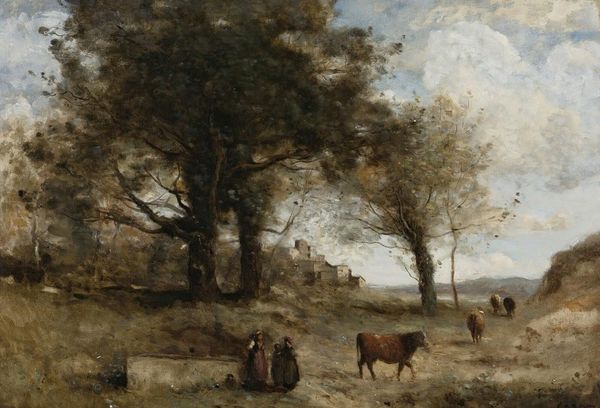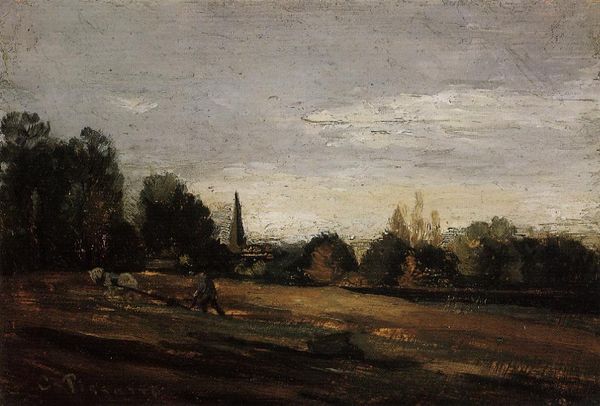
Copyright: Public domain
George Inness's Summer Landscape is an oil painting. Looking at the way Inness worked with his materials, you can see that he thinned the paint significantly, using a layered, glazing technique to achieve a luminous effect that is a hallmark of the Barbizon school. This approach to painting, emphasizing atmospheric depth and the play of light, aligns Inness with a broader trend towards naturalism in the arts. The canvas itself provides a textured ground for these delicate applications of pigment, allowing for a subtle interaction between the weave of the fabric and the painted image. Considering the social context, landscape painting at this time often reflected ideas about national identity and the relationship between humans and nature, which makes the pastoral scene of cows grazing become part of a larger commentary on labor and land. The artistic skill and the labor invested in the making of the painting are also indicative of the cultural value placed on artistic craftsmanship. Ultimately, the significance of the work lies in the combination of materials, process, and context, reflecting not only Inness’s technical skill but also the cultural and social values embedded in the American landscape tradition.
Comments
No comments
Be the first to comment and join the conversation on the ultimate creative platform.

